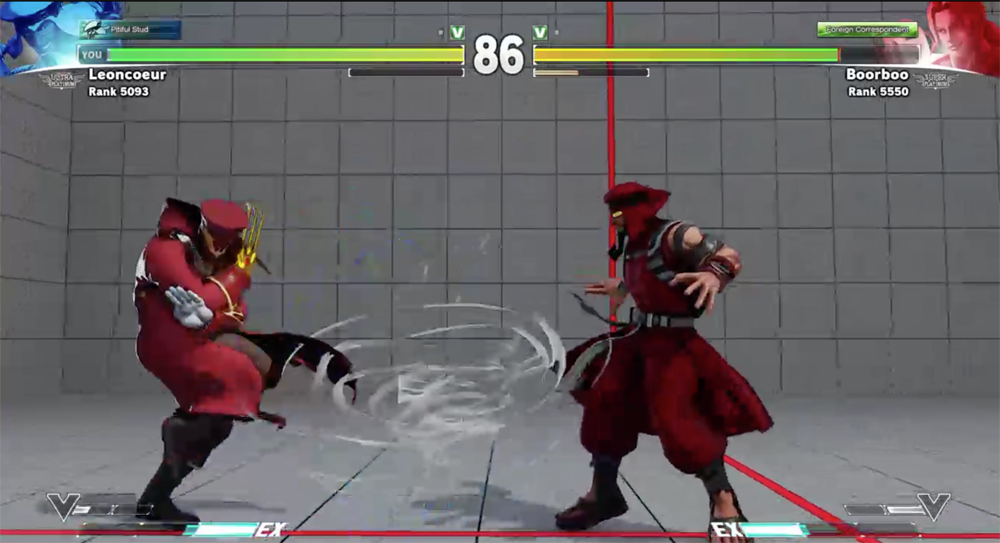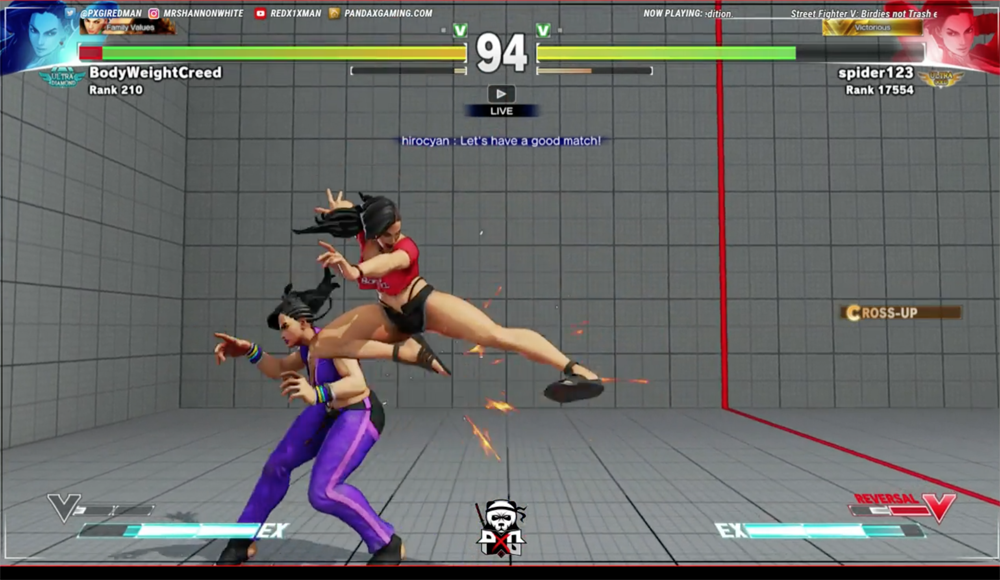
A quick and simple guide to getting into the popular fighting game.
by David Eller, Contributor
The following is a guide to watching and understanding Street Fighter V. This guide is intended for new viewers, to enable them to enjoy the technical and fast paced nature of Street Fighter V.
TL;DR
Street Fighter V is the quintessential modern fighting game. Players go head to head as fantasy martial artists in a match where the goal is to empty the opponents life bar. These matches typically consist of best out of three games, with each game being best out of three rounds. If the players do not beat each other after 99 seconds, the player with the highest life total wins the round. Occasionally two players may knock each other out at the same time.
Typical Street Fighter tournaments are double elimination, which means if a player loses two matches they are eliminated from the tournament.
The Screen
The edges of the screen will be divided based on the starting player, and each side will have the resource bars of the player that started on that side of the screen. Knowing which side each character belongs to is as easy as seeing the character faces in the upper corners of the screen.

During tournaments, there will also be an overlay of the player name around or on their characters health bar. The health bar is the most important bar on the screen, if either one becomes completely empty, the round ends.
On the bottom corners of the screen you have the V-Gauge bar and the Critical Art Meter. The critical art meter (also known as super meter) fills up when players connect with attacks that do not use it.
The Super meter is divided into three sections, and each section can be used to power up a special move, or all three can be used at once to perform a Critical Art Attack (also known as super attack.)
The V-Gauge is a defensive resource bar that only fills up when a player takes damage, uses V-Skill, or connects with a heavy attack. V-Reversal requires only one bar of V-Gauge and is an escape move unique to every character. V-Trigger is similar to a Critical Art Attack except that it is more of a utility move specific to every character, some are special attacks while others are temporary buffs.
The last bars are the smallest ones, known as the stun bars. Stun bars fill up every time a character is hit with an attack, but the meter empties quickly. If a character takes enough consecutive attacks the stun bar can fill up and cause the character to be stunned, enabling the attacker to attack unblocked by the disabled opponent.
Choosing A Character
Play style will determine character choice for most professional competitors.
- Aggressive players will choose a character with many offensive options and a low health pool.
- Strategy players will choose ranged characters that may not hit as hard but have good defensive tactics and abilities that keep their opponents at a distance with weapons like fireballs or stretchy limbs.
Terminology
This is by no means a complete list of terms, but here are some of the words and phrases you may hear when watching a Street Fighter V broadcast:
- Teching a throw: every character can throw, and this can be stopped if the other player presses throw at almost the same time as the attacking player presses throw.
- Tick throw: while in range, a player attacks and then throws the opponent before they can tech the throw.
- Normal attack: any of the basic kick and punch attacks that are not part of a special combo.
- Counter attack: normal attacks that connect during the animation of an opponent’s attack.
- Special attack: character specific attacks requiring a series of directional inputs on the joystick before a button is pressed. These are the Shoryukens and Fireballs of the game.
- Combo: a series of attacks that connect to each other, they are all character specific.
- Spacing: The space between the characters is changing all of the time through movement, a player who controls this empty space is referred to as having “good spacing.”
- Safety: A lot of moves can be fast or slow, depending on how they are used they can be considered “Safe” or “Unsafe.” Safety depends on whether or not the defending player can attack back. Unsafe moves are often slow moves or special attacks that leave the attacker unable to defend, enabling the defender to begin attacking. Professional players try to avoid unsafe moves whenever possible.
- Neutral or “Footsies”: Neutral Game is often best played by characters who walk fast and/or have long attacks or “pokes.” Footsies is also basically the same term but is called that due to the legs often being the longest limbs, often keeping the opponent at a distance with their feet.
- Cross Up: a player jumps but lands an attack on the opposite side of the defending player.
- Jump In: a player jumps at an opponent with an attack in the air.
- Empty Jump: an attacking player jumps at an opponent and does not use an air attack.
- Reversal: An attack used to stop a jump. Includes some special moves.
- Wake Up Game: the series of options players have when one player is knocked down and the other can time a specific attack.
- Meaty: an attack that is able to hit the opponent the moment they get up from being knocked down.
- Shimmy: a player walks up to an opponent and walks back immediately.
- Setup: a player executes a series of attacks resulting in a moment when the opponent doesn’t know how to defend themselves.
- Reads: a player making good predictions of their opponents moves. Playing unpredictably is considered a good and required skill in high-level Street Fighter play.
Watch A Match
The best way to learn is to watch tournament matches, here is one with informative and exciting commentary:

